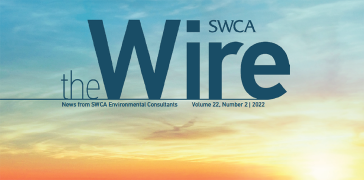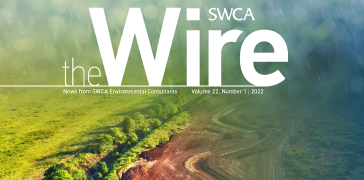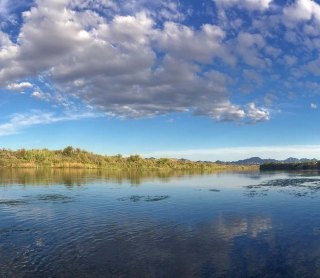
Healthy, sustainable water benefits people and the environment. Future development depends on the ability to sustainably manage water – to control, store and distribute these resources and manage aquatic habitats, wetlands, water quality, stormwater, and water rights.
Our scientists and consultants bring an interdisciplinary and holistic approach to water assessments and environmental compliance.
Our team helps clients navigate water laws and regulations at all levels of government, including local, state, and federal agencies, for projects including water management and conservation efforts. We evaluate and ensure compliance with the federal National Environmental Policy Act (NEPA), which considers the impact of projects on aspects such as watersheds, water quality, and aquatic habitats and their resources.
SWCA works closely with clients to provide a broad array of services and regulatory solutions to drive successful water resource projects.
Association Involvement
• American Council of Engineering Companies (ACEC)
• Association of State Floodplain Managers (ASFPM)
• American Water Resources Association (AWRA)
• Colorado River Water User Association
• Colorado Water Congress
• Texas Water Association (TWA)
• Society for Ecological Restoration (SER)
• Water Resilience Coalition (WRC)
Relevant Services
ENVIRONMENTS
- Rivers, Reservoirs, and Streams
- Lakes and Ponds
- Wetlands
- Stormwater
- Groundwater
PERMITTING AND REGULATORY COMPLIANCE
- National Environmental Policy Act (NEPA) and State Compliance
- Endangered Species Act (ESA)
- Clean Water Act 401 and 404
- Stormwater Management
- Drinking Water
- Federal Energy Regulatory Commission (FERC)
ASSESSMENT, MANAGEMENT, AND RESTORATION
- Field Investigations
- Delineation
- Compensatory Mitigation Plans
- Monitoring
- Mapping
- Planning and Design
- Aquatic and Riparian Ecology
- Stream and Habitat Restoration
- Ecosystem Studies
PLANNING
- Habitat Management and Conservation Plans
- Multi-Species Conservation Plans
- Endangered Species Recovery Plans
- Special Area Management Plans
- Surface Water Modeling
- Water Quality Studies and Modeling
- Master Planning
- Stakeholder Engagement and Strategic Communications
- Geospatial Analysis
- Regional Water Supply
- Expert Witness
- Total Maximum Daily Load (TMDL)
- Water Rights
FIELD SERVICES
- Water Quality Monitoring
- Aquifer Tests
- Sediment Quality Testing
- Hydrographic and Geomorphic Surveys
- Stream-gaging and Weir Design
- California Rapid Assessment Method (CRAM)
- Field delineations of aquatic resources
- Cultural surveys
- Biological surveys
Project Spotlights
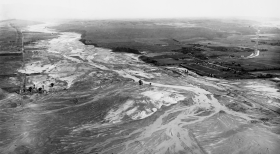
2023
When it Rains, it Pours: How One Man’s Con Set the Stage for a River’s Destruction and Restoration
When San Diego was facing a historic drought in 1915, the city council turned to an unlikely character to solve their crisis: Charles Hatfield, a 40-year-old sewing machine salesman and “rainmaker.”
“What followed in January and early February of 1916 was a downpour — 30 inches of rain by some estimates. Mission Valley flooded. The San Diego River jumped its banks. Farms, homes, bridges and businesses were swept away. Estimates of the deaths range from a dozen to 50.”
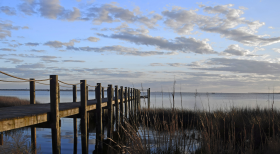
2022
Where the Water Goes: Planning Resilient Coastal Communities in North Carolina
Shaped by rivers, sounds, and the Atlantic Ocean, the coastal regions of North Carolina offer thousands of miles of scenic waterfront. Yet, due to the increasing impacts of climate change, these very waterways threaten the livelihood of a coastline dotted with historic towns and millions of residents. Coastal communities are facing intensifying storms, rising sea levels, and high flood risk.
Twenty-six communities participated in the first phase of North Carolina’s Resilient Coastal Communities Program (RCCP) in 2021 as a framework for counties and municipalities to prepare for coastal hazards through technical and financial support.
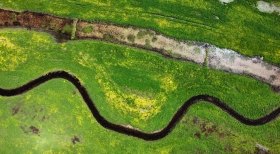
2022
Water, Water, Everywhere: Stream and Wetland Restoration in North Texas
An afternoon thunderstorm rolls across the plains of northern Texas and on the banks of the Red River, the former cattle pastures and agricultural fields at Riverby Ranch slowly begin to fill with water. But there is no cause for concern; in fact, everything is going according to plan. As the North Texas Municipal Water District (NTMWD) creates the area’s first major reservoir in nearly 30 years only a few miles from the Ranch, SWCA’s stream and wetland restoration plans will offset habitat lost to the new lake’s rising waters with a flood of its own – creating protected waterways and wetlands where cattle once grazed.
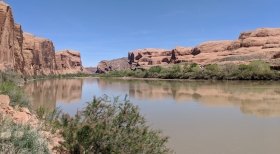
2022
A Tale of Two Rivers
Rivers are the arteries of our earth’s landscape. Nothing matches a river’s abilities to connect our places and spaces and sustain life in, alongside, and even miles away from its course. A river will travel along the path of least resistance, beginning at a high point known as the headwater and ending at its mouth. Depending on its elevation, age, geology, and other factors, a river can make a mad dash through the landscape leaving behind canyons and waterfalls, or it may saunter across the land creating wide floodplains and marshes along its edges.
How do we manage rivers as functioning, sustainable ecosystems while still supporting human needs? It’s a complicated question without easy answers.
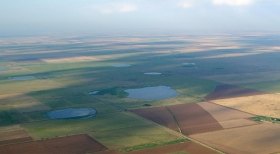
2022
Ephemeral but Not Forgotten: SWCA Works to Protect Playas on the Ogallala Aquifer
Scattered across the western Great Plains exist an unprotected, yet vital geological feature: playas.
Playas are shallow, depressional, and ephemeral wetlands that provide important ecological benefits to the landscape, such as floodwater retention and water filtration, as well as critical habitat for wildlife. There are over 80,000 playas in the Great Plains region alone, making them the most numerous type of wetland in the region. Serving as the primary water level recharge points for the underlying Ogallala Aquifer, the main water source for the public and for irrigation within the Great Plains, the presence of these playas is essential.

